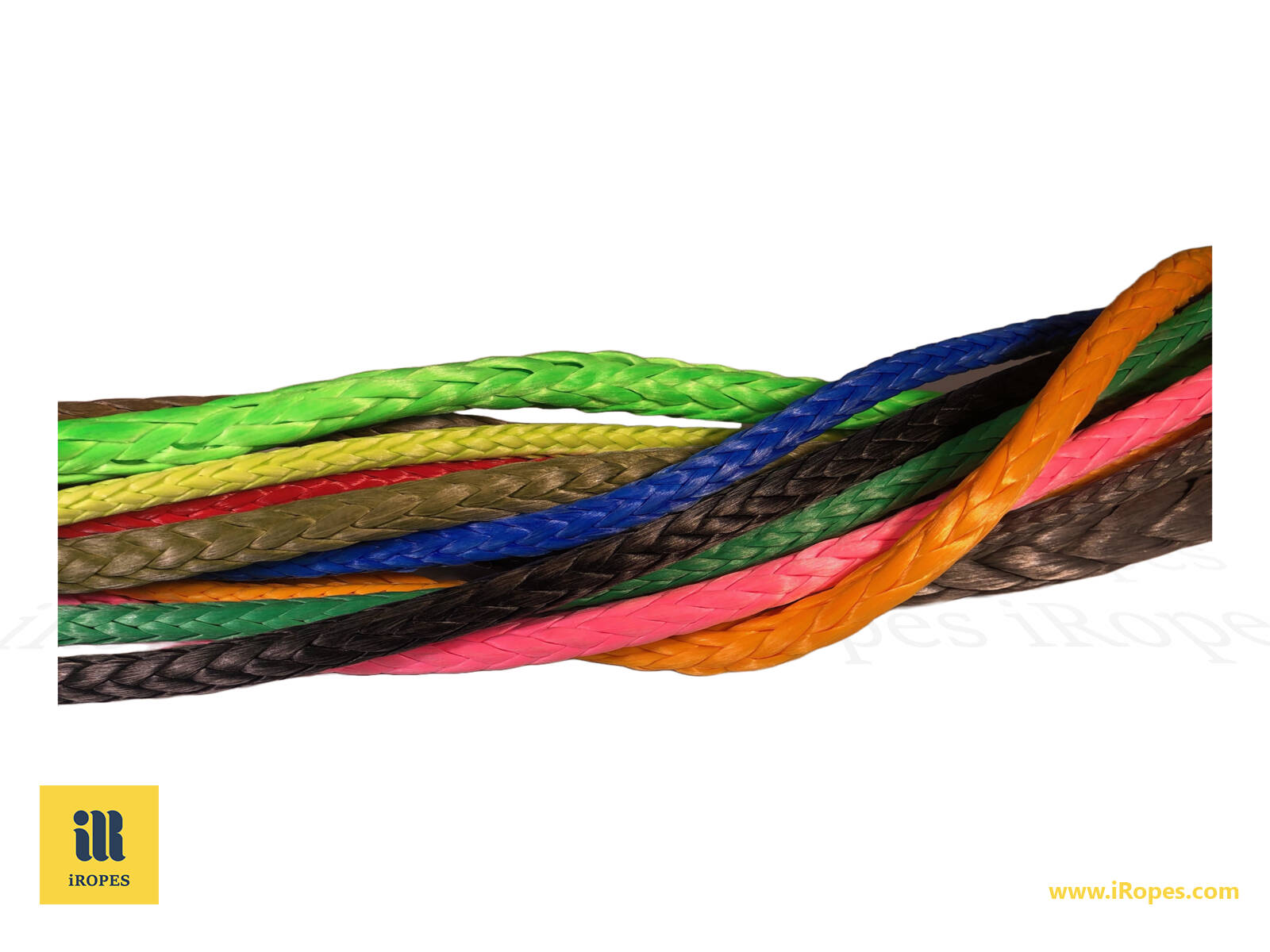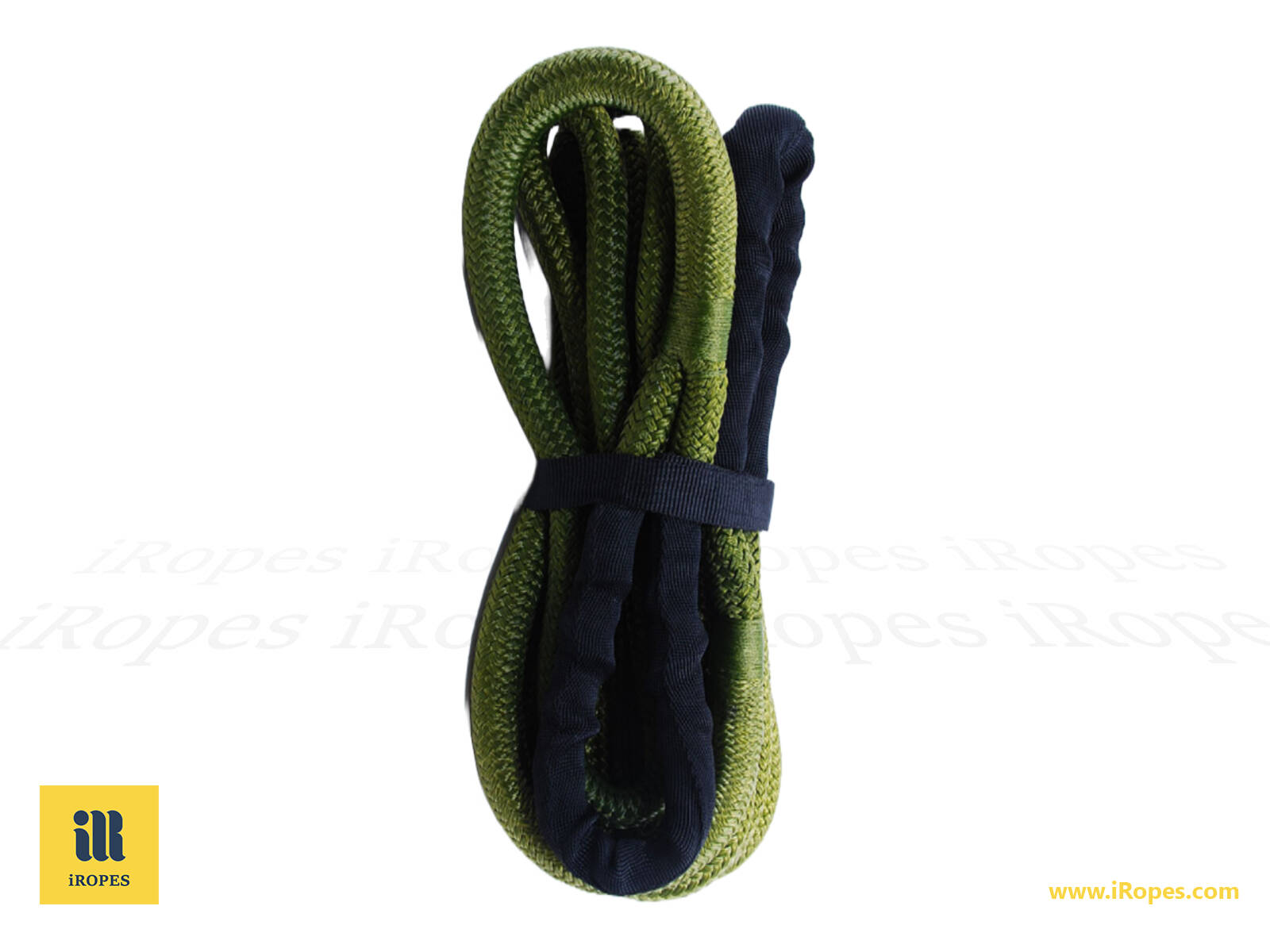Have you ever wondered how a single rope can mean the difference between success and failure in high-stakes situations? Enter the world of kinetic ropes - the unsung heroes of industries ranging from off-road adventures to industrial lifting. These high-performance synthetic marvels are revolutionising the way we approach challenging tasks, offering a perfect blend of strength, flexibility, and innovation.
In this exploration of 2-inch, 1.5-inch, and 1-inch kinetic ropes, we'll unravel the unique characteristics that make each size indispensable in its own right. From the brute strength of 2-inch ropes capable of mooring massive ships, to the versatile 1.5-inch ropes that strike a balance between power and manoeuvrability, to the lightweight yet surprisingly sturdy 1-inch ropes perfect for outdoor enthusiasts - there's a perfect rope for every application.
Join us as we delve into the fascinating world of kinetic rope technology, uncovering how these remarkable tools are pushing the boundaries of what's possible in industries across the globe. Whether you're a seasoned professional or simply curious about the science behind these synthetic powerhouses, this journey through the performance and applications of kinetic ropes promises to be an eye-opening adventure. Prepare to be amazed by the ingenuity and versatility that a simple rope can offer in our modern world.
Understanding the Strength and Durability of 2-inch Rope
When it comes to heavy-duty applications, the strength and durability of 2-inch rope are truly impressive. As someone who's worked in the industrial rigging sector for over a decade, I've seen firsthand how these robust ropes can handle the toughest jobs with ease.
Measuring Tensile Strength and Breaking Load
The tensile strength of a 2-inch rope is nothing short of remarkable. Did you know that some high-performance 2-inch ropes can withstand loads exceeding 115,000 pounds? That's equivalent to lifting about 25 average-sized cars! This extraordinary strength comes from advanced manufacturing techniques and materials science.
But what exactly do we mean by tensile strength? Simply put, it's the maximum stress a rope can withstand before breaking when stretched. For 2-inch ropes, this is typically measured using specialized tensile testing machines that gradually increase the load until the rope fails.
Always remember: The working load limit of a rope is typically 10-20% of its breaking strength. This safety factor ensures the rope's longevity and prevents catastrophic failures.
Factors Affecting Rope Durability
The durability of 2-inch ropes isn't just about raw strength. It's a combination of several factors:
- Material choice: Synthetic materials like nylon and polyester offer superior strength-to-weight ratios and resistance to environmental factors.
- Construction method: Double-braided or kernmantle constructions provide excellent balance between strength and flexibility.
- Environmental resistance: High-quality 2-inch ropes are designed to withstand UV rays, chemicals, and abrasion, making them ideal for outdoor and industrial use.
In my experience, a well-maintained 2-inch rope can last for years, even in demanding industrial environments. I once worked on a project where we used the same set of 2-inch ropes for heavy lifting operations over three years without any signs of significant wear.
Have you ever wondered how 2-inch ropes compare to other sizes? While they may be overkill for some applications, their unmatched strength makes them indispensable for industrial lifting, mooring large vessels, and heavy towing operations. The extra diameter provides a larger surface area, reducing wear and increasing the rope's lifespan in high-stress scenarios.
Next time you see a massive ship securely moored at a dock or a heavy piece of machinery being hoisted at a construction site, take a moment to appreciate the incredible strength and durability of the 2-inch ropes making it all possible. They're the unsung heroes of many industrial operations, quietly bearing enormous loads day in and day out.
Versatility and Flexibility of 1.5-inch Rope
When it comes to finding the perfect balance between strength and manoeuvrability, 1.5-inch rope is often the unsung hero of the rope world. As someone who's spent years working with various rope sizes across different industries, I can confidently say that 1.5-inch rope offers a unique blend of performance characteristics that make it incredibly versatile.
Characteristics and Applications of 1.5-inch Rope
The beauty of 1.5-inch rope lies in its adaptability. It's thick enough to provide substantial strength, yet slim enough to remain manageable for a wide range of tasks. Let's break down some key features:
- Balanced tensile strength: With a typical breaking strength ranging from 8,000 to 12,000 pounds, 1.5-inch rope can handle serious loads without being overly bulky.
- Enhanced flexibility: The moderate diameter allows for easier bending and knot-tying compared to thicker ropes, making it ideal for complex rigging setups.
- Versatile applications: From marine environments to construction sites, 1.5-inch rope finds its place in numerous industries.
I recall a particularly challenging arborist job where we needed to safely lower a massive tree limb in a tight urban space. The 1.5-inch rope we used provided the perfect combination of strength to support the weight and flexibility to navigate around obstacles. It's moments like these that really showcase the versatility of this rope size.

Material Types and Their Impact on Rope Performance
The choice of material significantly influences the performance of 1.5-inch rope. Let's explore some common options:
- Nylon: Offers excellent strength and elasticity, making it ideal for dynamic loads in marine and industrial applications.
- Polyester: Known for its low stretch and high UV resistance, perfect for outdoor use and steady load-bearing tasks.
- Polypropylene: Lightweight and water-resistant, often used in marine environments where buoyancy is desirable.
- Manila hemp: A natural fibre option with good grip and biodegradability, suitable for traditional rigging and decorative purposes.
When selecting a 1.5-inch rope, consider the environmental factors it will face. For instance, I once worked on a coastal construction project where we opted for polyester ropes due to their excellent UV resistance and ability to withstand saltwater exposure.
Remember, the versatility of 1.5-inch rope doesn't mean it's a one-size-fits-all solution. Always assess your specific needs and consult with rope experts to ensure you're choosing the right tool for the job. Have you ever found yourself in a situation where a 1.5-inch rope saved the day? I'd love to hear your experiences!
Pro Tip
Always check the safe working load of your 1.5-inch rope before use. It's typically 10-20% of the breaking strength.
Lightweight and Compact Nature of 1-inch Rope
As we delve into the world of 1-inch ropes, I'm reminded of a backpacking trip I took through the rugged Australian Outback. The importance of lightweight, compact gear became crystal clear as I navigated challenging terrain with limited pack space. This experience perfectly illustrates why 1-inch ropes have become a go-to choice for outdoor enthusiasts and professionals alike.
Polypropylene: The Lightest Rope Material
When it comes to lightweight ropes, polypropylene reigns supreme. I've handled countless rope materials over the years, but the feather-light feel of polypropylene still amazes me. Here's why it's a game-changer:
- Unmatched buoyancy: Polypropylene floats on water, making it ideal for marine applications and water rescue scenarios.
- Weather resistance: Its moderate UV resistance ensures durability in outdoor settings, whether you're setting up camp or securing equipment.
- Strength-to-weight ratio: Don't let its lightness fool you – polypropylene offers impressive strength for its weight, often surprising first-time users.
Imagine effortlessly tossing a coil of 1-inch polypropylene rope into your pack, knowing it won't weigh you down on long treks. That's the beauty of this material – it's there when you need it, without being a burden.

Comparing Natural and Synthetic 1-inch Ropes
While polypropylene shines in the lightweight category, it's worth exploring how other materials stack up. Let's compare some common 1-inch rope options:
| Material | Weight | Strength | Durability |
|---|---|---|---|
| Polypropylene | Lightest | Moderate | Good |
| Nylon | Light | High | Excellent |
| Polyester | Moderate | High | Excellent |
| Manila (Natural) | Heavy | Moderate | Fair |
In my experience, synthetic ropes like polypropylene and nylon often outperform natural fibres in harsh conditions. On a recent sailing trip, I watched in awe as a thin 1-inch synthetic rope effortlessly handled loads that would have challenged a much thicker natural fibre rope.
Have you ever found yourself in a situation where the weight of your gear made all the difference? Whether you're an avid camper, a professional arborist, or simply someone who appreciates efficient tools, the lightweight and compact nature of 1-inch ropes, especially those made from materials like polypropylene, can be a real game-changer.
Remember: While 1-inch ropes are fantastic for many applications, always ensure you're using the right rope for the job. For heavy-duty tasks, you might need to consider thicker options like the 1.5-inch or 2-inch ropes we discussed earlier.
As we wrap up our exploration of 1-inch ropes, I'm curious – what's your go-to rope for lightweight applications? Have you had any experiences where a compact, 1-inch rope saved the day? Share your stories in the comments below!
Customization Options for Kinetic Recovery Ropes
MATERIAL: Nylon core Nylon cover
CONSTRUCT: double braided
ELONGATION: 30%
As an off-road enthusiast who's been through more sticky situations than I care to admit, I can't stress enough how crucial it is to have the right kinetic recovery rope for your vehicle. The beauty of these ropes lies not just in their strength, but in the myriad of customization options available. Let's dive into the world of personalized kinetic ropes and explore how you can tailor them to your specific needs.
Length and Diameter Customization
When it comes to kinetic recovery ropes, one size definitely doesn't fit all. I learned this the hard way during a muddy expedition in the Outback. The rope I had was too short for a safe recovery, turning a simple pull into a nerve-wracking ordeal.
Typically, custom lengths range from 20 to 30 feet, but you can often request specific lengths to suit your unique requirements. The diameter, on the other hand, directly correlates with the rope's breaking strength and the weight of the vehicles you'll be recovering.
Pro Tip: Always choose a kinetic rope with a breaking strength at least 2-3 times the gross vehicle weight of the heaviest vehicle you plan to recover.
Here's a quick reference guide to help you choose the right diameter:
| Vehicle Weight | Recommended Rope Diameter | Typical Breaking Strength |
|---|---|---|
| Up to 6,000 lbs | 3/4 inch | 18,000 lbs |
| 6,000 - 8,000 lbs | 7/8 inch | 28,000 lbs |
| 8,000 - 10,000 lbs | 1 inch | 35,360 lbs |
Color and Material Options
Gone are the days of boring, single-color ropes. Modern kinetic recovery ropes come in a rainbow of options. But these aren't just for show – different colors can serve practical purposes too.
- High-visibility colors: Neon yellow or orange ropes are perfect for low-light conditions or densely vegetated areas.
- Camouflage patterns: Ideal for off-roaders who prefer their gear to blend in with nature.
- Two-tone designs: These can help you quickly identify the midpoint of your rope, which is crucial for proper setup during recovery.
As for materials, nylon and polyester are the top contenders. Nylon offers excellent elasticity, crucial for the kinetic energy transfer that makes these ropes so effective. Polyester, while less stretchy, boasts superior UV resistance – a godsend for those sun-baked trails.

I remember a recovery operation where my bright red rope not only looked great against the muddy backdrop but also made it easy for everyone involved to see and avoid the tension line. Safety and style in one package – what's not to love?
Have you ever found yourself wishing your recovery rope had a specific feature or color? With these customization options, you can turn that wish into reality. Whether you're tackling treacherous muddy trails or navigating rocky mountain passes, a personalized kinetic recovery rope ensures you're always prepared for the unexpected.
In the next section, we'll explore the world of end fittings and attachments – the unsung heroes that can make or break your recovery operation. Stay tuned, and don't forget to share your own customization experiences in the comments below!
If you're interested in learning more about the advantages of kinetic recovery ropes, be sure to check out our article on the key advantages of Yankum Kinetic Rope over Tow Rope.
Explore the world of kinetic ropes with iRopes as we delve into the performance and applications of 2 in, 1.5 in, and 1 in ropes. The 2 in rope boasts high breaking strength and durability, making it ideal for industrial lifting and towing. Meanwhile, the 1.5 in rope offers a balance of strength and versatility, suitable for rigging and rescue operations. Lastly, the lightweight 1 in rope excels in portability and is perfect for camping and recreational activities. iRopes' customizable kinetic ropes, available in various colours and tailored to specific needs, ensure you have the right solution for any scenario.
Contact Us for Custom Rope Solutions
Fill in the inquiry form above to get customised rope solutions tailored to your exact requirements. Whether you need a 2 in rope for heavy-duty lifting, a 1.5 in rope for versatile applications, or a compact 1 in rope for outdoor adventures, iRopes has you covered with high-quality, durable, and adaptable products.